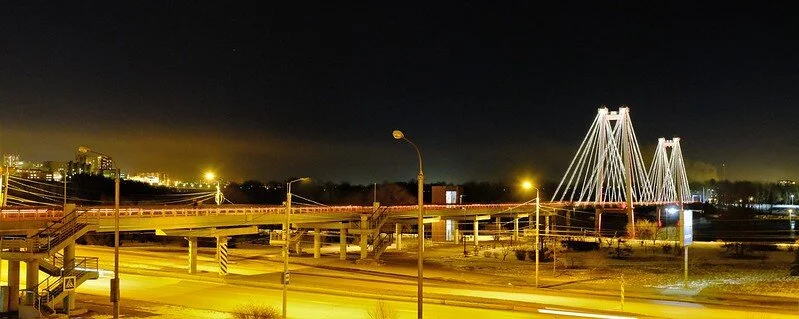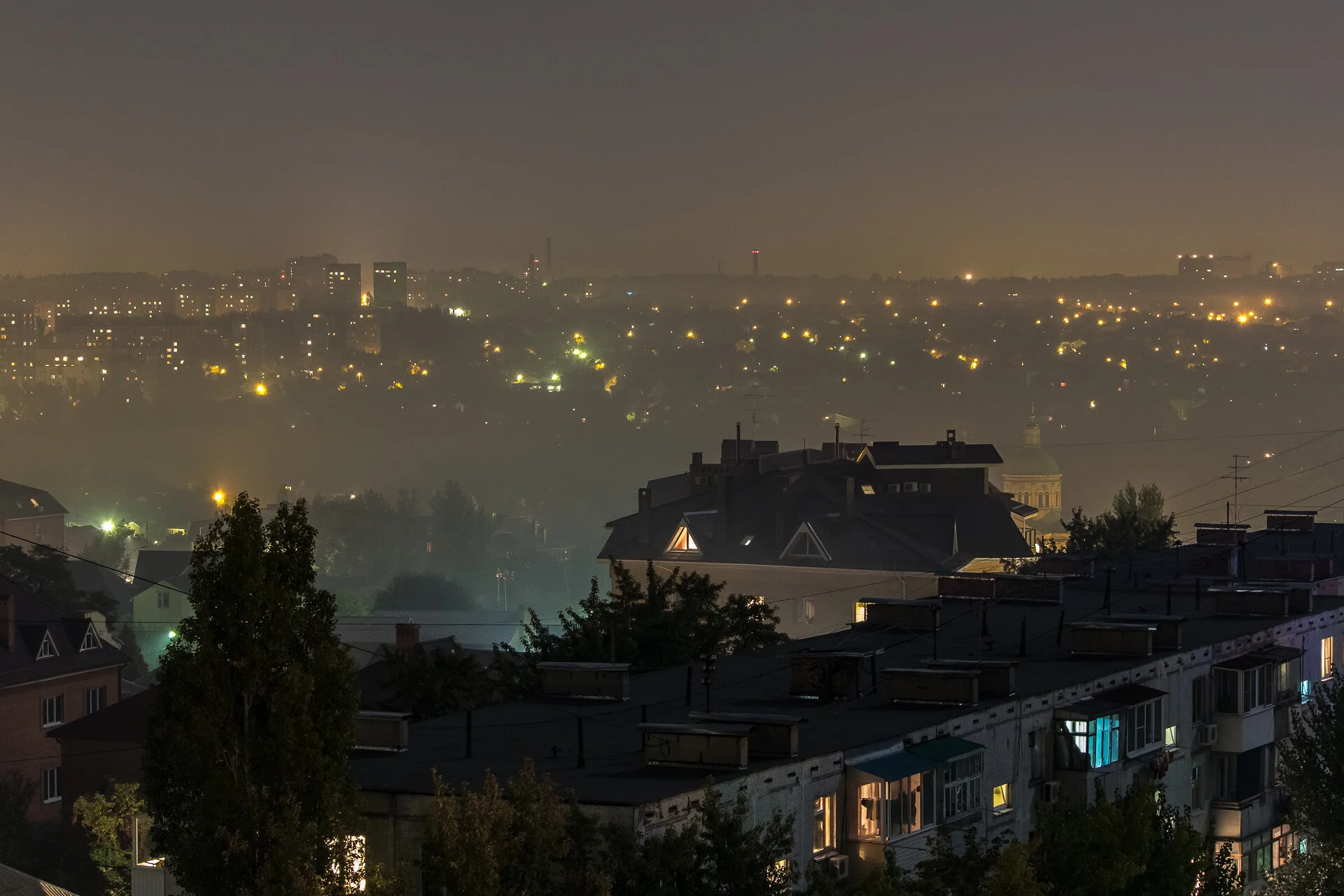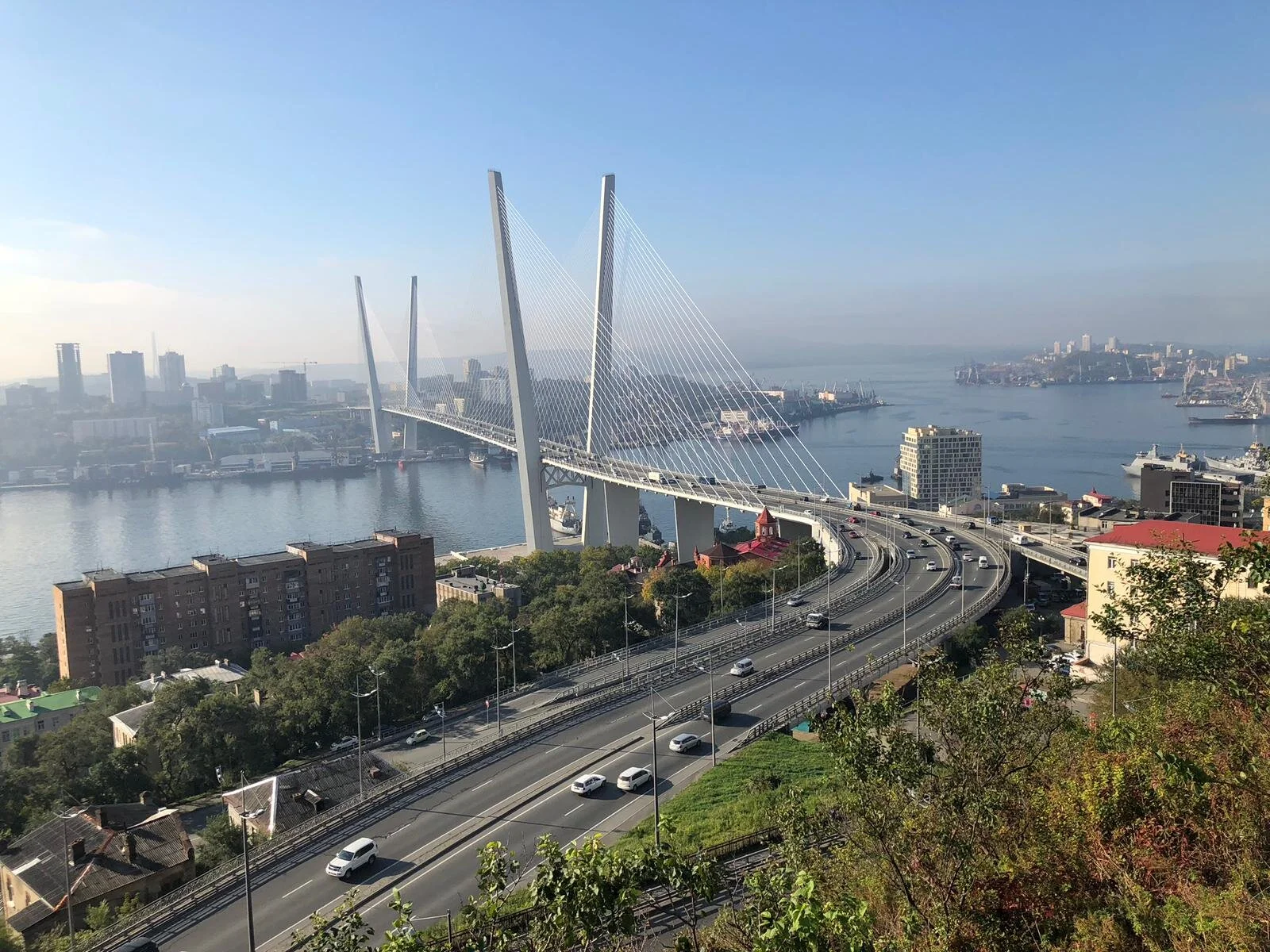Russia all around : creative cities 2/3
Welcome back! If you’re here to find out about what cities are ranked 15 - 6 in the Creative Capital Index, you’re in luck.
This series has been inspired by the inaugural Russia Creativity Week (Российская Креативная Неделя) that took place between 7 - 10 September 2020 across Russia and 11 - 13 September in Moscow’s Gorky Park. Its mission? To strengthen the self-identity of the Russian creative industries and to realise the economic potential of creativity and creative partnerships in Russia. At ArtyGeneration, we’re also expanding our focus to Russia’s less well-known cities, including many of those featured here.
As part of the Creative cities: creative capital series, we’re publishing three articles that take you through the cities featured in PwC and the Calvert 22 Foundation’s creative capital index. Here, we look at cities ranked 15 - 6.
15. Krasnoyarsk
Image by Vyacheslav Buharov (2020), CC BY-SA
Krasnoyarsk is a buzzing industrial city whose cultural centre snuggles the Yenisei river. Its well-lit waterfront is particularly striking in winter, and people like Moscow-native Evgeny Stodushny, CEO of the Krasnoyarsk Philharmonia, are investing in the city’s creative development and at the same time, strengthening its connections with other creative cities and cultural institutions in Siberia (e.g. by forming touring networks). Its industrial heritage is being reassessed for its creative potential, and creative spaces like loft project Квадрат (Square) and Kamenka bring creative communities together. The city’s Book Fair is a substantial international culture and literature event. You can also visit Ploshad Mira, the largest platform for contemporary art in Siberia.
14. Ufa
Ufa, by Vyacheslav Buharov (2020), CC BY-SA
Another surprise that this city, known as one of the gateways to the Urals, featured so highly in the list. Yet it boasts a relative melting pot of lingual, cultural and religious diversity as the capital of the Republic of Bashkortostan. Ufa is also one of the first places in Russia reported to have to collaborated with street artists instead of punishing them. If you’re a fan of micro-carvings in pencil led, Ufa is also the city that Salavat Fidai, well-known for his exquisite and highly detailed minute carvings, calls home.
13. Rostov-on-Don
Rostov-on-Don by O.did on Flickr (2012), CC BY
Rostov-on-Don is perhaps a hidden gem of contemporary arts in Russia, with a creative industries legacy starting in 2011. This southernmost city rates most highly for branding, perhaps helped by the numerous initiatives like the interdisciplinary art centre Makaronka, the Don Contemporary Art Foundation and the Museum of Contemporary Pictorial Art on Dmitrovsky. Visit the creative clusters C52 and Fabrika.
12. Tyumen
Exploring Tyumen’s heritage, Arjan Mook (2018), CC BY-SA
Ranking well for government support, city and business, Tyumen’s cultural highlights are its active theatre scene and the cultural heritage on wide display in the city, namely, bountiful examples of the old wooden houses that represent old Russia. Conversely, it also represents new Russia - young and oil rich. Tyumen has an interesting museum cluster and a wonderful legacy of sending trainloads of cats to rescue the former Leningrad and now St Petersburg from plagues of rats after the end of the Siege, commemorated in the Park of Siberian Cats. No-one sleeps, an independent bookshop, is worth checking out, as is the space and events organised by the river-front creative project, Контора пароходства.
11. Nizhny Novgorod
Here we benefit from a great recent feature written by ArtyGeneration author, Elena Rozhnova, who travelled to Nizhny to find out more for herself. She tells us: ‘Nizhny Novgorod is located at the confluence of two rivers - Oka and Volga, just a 3 hour train ride from Moscow. After Moscow and St. Petersburg, it can now be considered a hot spot for Russian contemporary art. A new dynamic arose in 2010 with a younger generation of street artists using the city as an open air exhibition space, where buildings became canvas. In just 10 years, many of these artists became well known, are now actively collaborating with Moscow galleries and museums, and using more and more traditional techniques as medium.’
I was surprised Nizhny Novgorod wasn’t higher in the rankings. ‘In 2012, the State Contemporary Art Center "Arsenal" opened on the territory of the city Kremlin, at the very heart of the city. Following the move, two independent art galleries - FUTURO and "TOLK" - were also established nearby. Since 2019, one of the main national art events - Innovation Prize and its nominees exhibition - has moved to the city as well... And it would appear that it is only the beginning!’. Although government support was rated quite low in the Creative Capital Index, Elena adds that with government support ‘local authorities and urban planners started to understand the importance of culture to foster the dynamism of the city.’
Learn more about challenges and opportunities (from a lack of exhibition space to a wave of new, younger art collectors) in the city from the artists and cultural managers that are part of its change.
10. Vladivostok
View of Vladivostok (2018), Arjan Mook, CC BY-SA
From Moscow to Vladivostok by train will take you seven days across ten time zones. Despite its eye-watering distance from the capital, Vladivostok ranks relatively high for city, branding and people ratings. For a population of 600,000, it has a good cultural offer, including the Arka Gallery and the active Zarya Centre for Contemporary Art that celebrates the best in local, Russian and international culture. Since 2014, Zarya has also been home to Russia’s most Easterly art residency programme. In 2020, Zarya will close its programme and turn into a coworking and creative hub. With the announcement from several key institutions - Tretyakov Gallery, Hermitage, St Petersburg’s State Russian Museum, Moscow’s Museum of Oriental Art and St Petersburg Mariinsky Theater - to open a branch in the far East city, we bet the artistic offer will be even more buzzing in a few months.
Khanty-Mansiysk, from Anatolia Baklanova and Typical Khanty-Mansiysk on Instagram
I have to confess that this was the only city on the list that I hadn’t heard of. Neither had my partner, who is an expert on most things relating to Russian travel, nor another Russia expert I talked to. Looking at the rankings explains why Khanty-Mansiysk came out so high - this city comes first in terms of government support for creativity. Creative Town, a forum to bring together the city’s regional cultural stakeholders and young people, and this recent agreement on the development of the creative industries in the region, really show this in practice. That has yet to pay off into business status or a city brand, but it suggests that we should watch this space.
8. Yakutsk
Photo by Alex Vasilyev
Many are attracted to life in the world’s coldest city for its notoriety alone, with the extreme giving rise to many exceptional photography series, like Yakutsk native, Alex Vasilyev, and his photo on the left. Yakutsk gets a high rating thanks to a high level of government support and it doesn’t score badly on business either, with the highest economic ranking of all of the cities surveyed, illustrated perhaps by the many IT firms reported to be based in the city built on permafrost. Despite the cold, it comes out second after Moscow in terms of quality of life. The Creative Yakutia Laboratory is a fairly recent initiative set up by the Republic’s Prime Minister as one of seven areas of priority for local development. They’ve identified a need for creative industries training as a priority for developing the city’s creative workforce with a training programme approved in April 2020 as a first step.
7. Kaliningrad
"Kaliningrad" by Maks Karochkin is licensed under CC BY-NC-SA 2.0
With its own special economic area, a young governor and a geographically-influenced outlook to Europe, Kaliningrad is a wonderful enigma. With its restored German architecture and Soviet-esque main square, it is nonetheless known for edgy and experimental art, and increasingly for its creative industries and celebration of its industrial heritage. It hosts a branch of the National Centre of Contemporary Art and a well-known sound art festival, Sound Around. Krespektiva is an active research and support organisation for the creative industries in the region with the goal of helping creative business. Check out the region’s street art and SvetlayaBashyna, a nearby grassroots creative initiative.
6. Krasnodar
The description that accompanies Krasnodar’s ranking suggests that it is a culinary and cultural hotspot, benefitting from a lack of other comparable towns and cities nearby. Geography plays another role: this city is a Southern hub, for both business and culture, with the Typography centre of contemporary art emerging from the grassroots to support and promote the region’s contemporary art. Internationally active Art Group ZIP is based in the city. Keep an eye on ArtyGeneration to discover more, as this is the next city focus we’ll publish in the Russia all around section.
Krasnodar park, photo taken from its official Instagram account.
That’s all for now! You might have ideas of which cities might be in the top five. But for now, do you have any thoughts about this list of ten, or recommendations of artists or initiatives we could feature? Let us know!
Remember to explore the google map of Russia’s creative cities, and come back next week to see who made the top 5 in the creative capital index.













